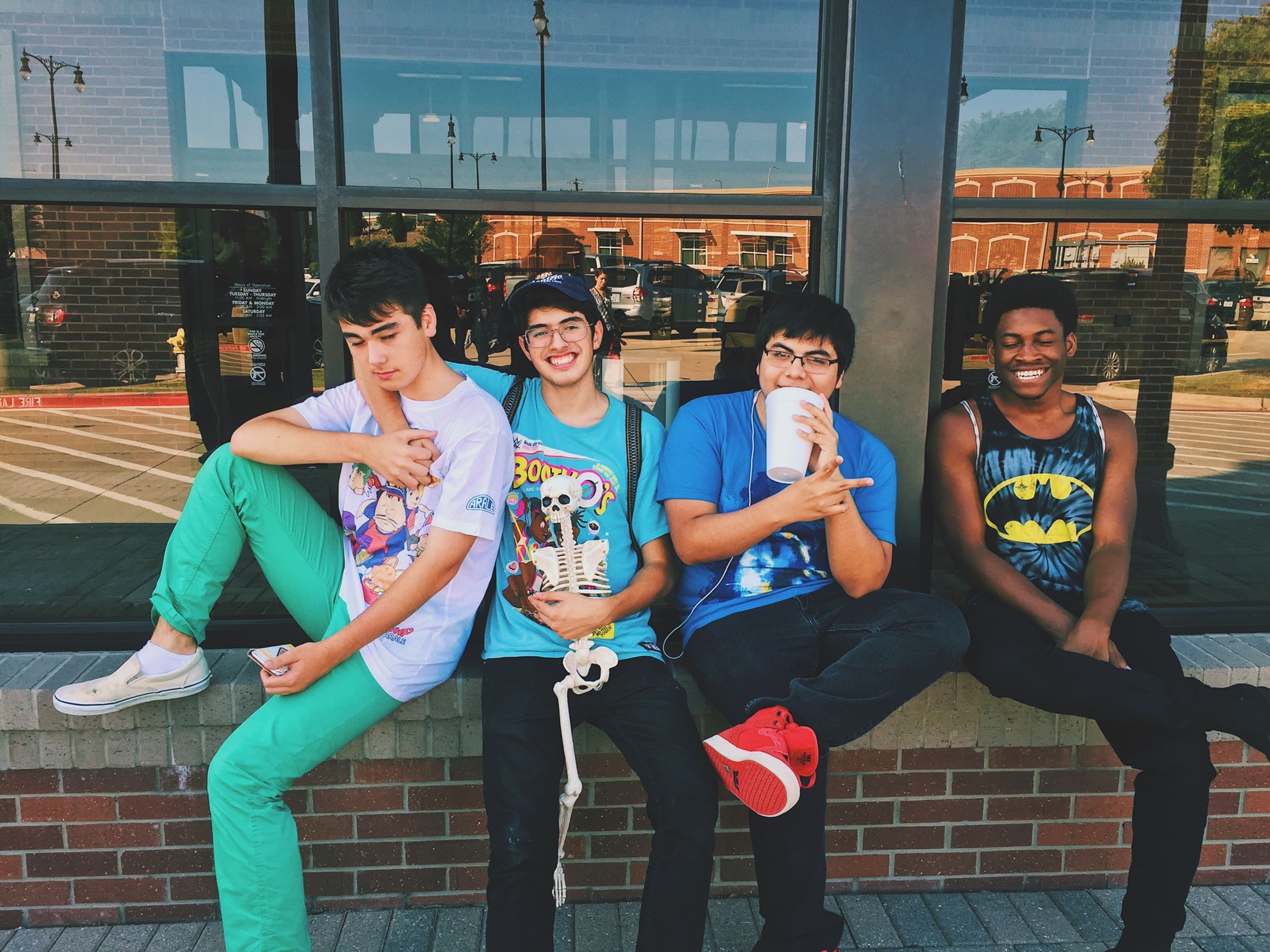Resources for First-Gen Students
According to the Center for First-Generation Student Success, in the academic year of 2015-16, 56% of undergraduates in the nation were first-generation students (neither parent had a bachelor’s degree). With such a large number of first-generation students in the country, it’s no surprise that an increasing number of organizations, programs, and scholarships are aiming to support these students. Here, we highlight some important resources that may be helpful in a first-gen student’s journey to and through college.
Feel free to jump to the section that interests you the most:
Why Resources Matter
First-generation students access less academic advising and academic support services while in college, and 33% of first-generation students who enroll in college drop out within 3 years. These statistics are attributed to the fact that first-generation students lack the financial, emotional, and physical support that non-first gen counterparts usually have. Despite these disadvantages (or perhaps as a result), first-gen students statistically work harder than non-first gen students, putting in a median of 20 hours per week at their jobs versus non-first gen students’ 12 hours a week.
Scholarships, community organizations, and other programs aim to reward the hard work first-gen students put in and alleviate stress and complications, helping students access resources that they aren’t aware of and stay enrolled in college. By removing these barriers, first-gen students can more easily access a successful, fulfilling, and holistic college experience, developing a sense of accomplishment and independence.
Why the Success of First-Gen Students is Important
Compared to their non-first generation counterparts, first-generation students tend to have a higher desire to give back to their parents, family, and community. In fact, a study showed that around 69% of first-gen students said they went to college to help their parents and 61% said they want to give back to their community, while only 39% and 43% of non-first gen students answered in that way. This can be seen in a higher amount of first-gen students choosing to enter the nonprofit and government sectors when compared to other students (29% and 15.2% versus 25.9% and 7.3%, respectively).
In addition, studies have shown the increase in innovation and productivity when a workplace is more diverse, especially given that 42% of Black students and 48% of Hispanic students are first-generation students, compared to 28% of white students. Harvard Business Review found that above-average diversity in companies (in terms of migration, industry, career path, gender, education, age) had 19% higher innovation revenues and 9% higher earnings. The inclusion and representation of different perspectives, upbringings, and statuses is crucial in developing a well-rounded work environment.
How Do I Finance College?
People say that college is an investment, but it’s difficult sometimes to decide whether the rewards of a college education are worth taking on student debt. Luckily, scholarships based on merit or need have long uplifted students who have shown academic rigor, financial need, artistic capabilities, and more. Here are the top three lists of scholarships to look into (some scholarships may overlap):
First in Family Scholarship List from Scholarships.com — a comprehensive list of scholarships with different criteria — such as the applicant’s location, ethnicity, grades, extracurriculars — and different award amounts. Scholarships.com is also a great way to filter different qualifications and criterias to find a scholarship that suits you the best.
The Ultimate First Generation Scholarship List — a list of larger scholarships that not only offer a substantial amount of scholarship, but are also funded by larger organizations and brands. Some are specific to certain schools or have detailed criteria, but are great places to start in finding suitable schools and programs.
College Scholarship First in Family List — a list of different types of first-generation scholarships. The listed scholarships are more area and requirement specific, but this narrows down applicants who qualify and might give the student more opportunity to win it.
Other Programs Aimed at Financial Assistance:
Questbridge — Questbridge partners with top colleges to provide outstanding high school students with either early admission and full four-year scholarships OR regular admission and generous financial aid packages that meet demonstrated needs. 70% of Finalists are first-generation students, and almost all the partnered colleges consider undocumented students.
SEO Scholar — While not directly aimed at offering financial support, the Class of 2020 SEO Scholars were awarded $4.7 million dollars in scholarships and grants alone, thanks to the counseling, support, and opportunities that SEO Scholars receive. With branches in NYC and SF, the program provides students with extra learning time, SAT and college admissions prep, and more hands-on support, even in college. 100% of SEO Scholars attend a four-year college, and 85% are first-generation students.
Where Can I Receive Community Support?
Oftentimes, first-generation students don’t have the type of community support that non-first gen students do, like parents understanding the college system or expensive college counseling. Programs created by a range of organizations that assist students in cultivating a healthy understanding of college admissions, financial aid, and more.
I’m First! — I’m First! is a community website with video and blog stories, testimonials, and experiences from first-generation students around the country. The online community is part of a greater organization called Strive for Community, which connects students with financial aid needs with mentoring them through the college and financial aid process.
Strive for Community/UStrive — Strive for Community is an organization that partners with different corporations, colleges, and community members to provide online mentoring and opportunities for students with financial aid needs. Their online platform is called UStrive, and it is free to sign up.
CollegePoint — Through CollegePoint, students can pair up with free college advisors via text, email, call, video chat — methods that allow students and advisors to connect throughout the busy school year. Advisors help students narrow down college lists, review essays, navigate financial aid, make college decisions, and more. Students must meet academic- and needs-based criterias to be nominated.
America Needs You — America Needs You is a program that pairs fellows (students) with mentors for a two-year program for “high-achieving, low-income, first-generation college students.” Students have opportunities for one-on-one mentorship, workshop attendance, extensive networking, and financial aid assistance. The organization has locations in NJ, NY, CA (greater Los Angeles region), and IL (Chicago area).
Upward Bound — Upward Bound is a federally-funded program that is now part of a cluster of programs named TRiO. Its purpose is to increase the number of students who complete secondary education and enroll in and graduate from post-secondary education, serving students from low-income families and/or first-generation students.
Center for First-Generation Student Success — This organization offers a wide-range of information and opportunities for first-generation students, such as advocacy, programs, written experiences, and more. The Center for First-Generation Student Success focuses more on outsourcing resources and manpower into the community, but has a lot of helpful details within its website.
Where Can I Find Support At School?
US students spend 180 days in school, each school day averaging around 6.8 hours. School is a crucial place for students as it’s where they spend almost the majority of their time. It is crucial to find teachers, peers, and staff members who help students find their passions and strive to meet their goals.
AVID — AVID (Advancement Via Individual Determination) is a nonprofit organization that partners with schools to provide support and resources to close the opportunity gap for students to be prepared for college, career, and life. Usually presented as an elective class in high school, students are provided with social and academic support to accelerate learning and close this gap.
PeerForward — PeerForward, formerly known as College Summit, works with select school districts to establish peer-to-peer relationships to not only keep students in school, but also increase the rate of students who go to college. Their programs work in districts across the nation, from California to Florida to Washington D.C.
College Advising Corps — Placing recent college graduates in underserved high schools around the country, these full-time college advisors help students to foster a college-going culture. They work with teachers, staff, students, and parents to help students see the opportunities that going to college will present and assists with the process of applying to college.
Keep in mind that every first-generation student’s background and experiences are unique, which makes it difficult for a single program to encompass every need. However, having support along the way will hopefully boost the number of students who stay in college and excel in it too.
Overcoming barriers and struggles should not be an isolating experience. Every student deserves a fair opportunity to be educated, and these resources are the catalysts for first-gen students’ journey towards personal success.





